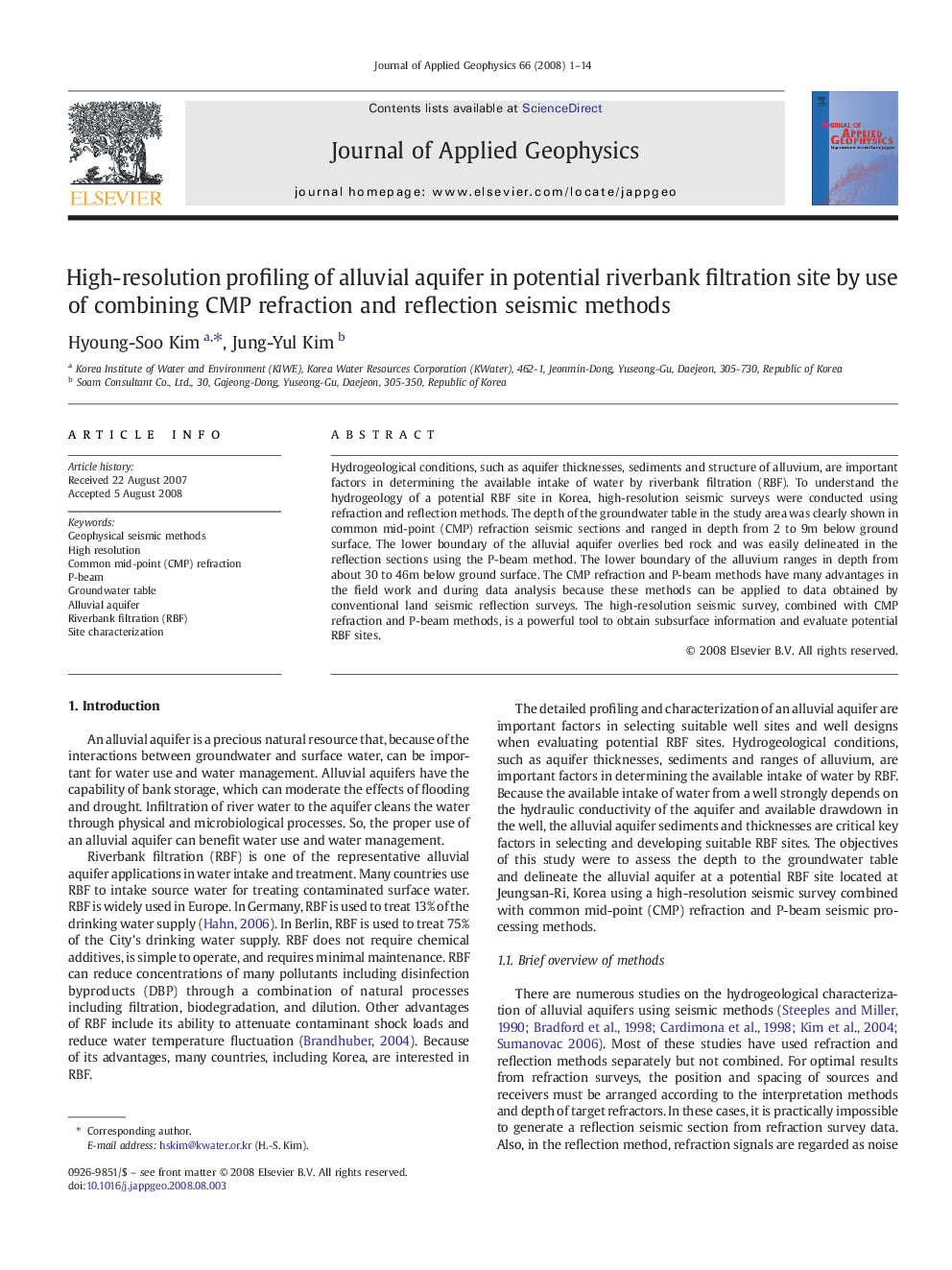| Article ID | Journal | Published Year | Pages | File Type |
|---|---|---|---|---|
| 4740998 | Journal of Applied Geophysics | 2008 | 14 Pages |
Hydrogeological conditions, such as aquifer thicknesses, sediments and structure of alluvium, are important factors in determining the available intake of water by riverbank filtration (RBF). To understand the hydrogeology of a potential RBF site in Korea, high-resolution seismic surveys were conducted using refraction and reflection methods. The depth of the groundwater table in the study area was clearly shown in common mid-point (CMP) refraction seismic sections and ranged in depth from 2 to 9m below ground surface. The lower boundary of the alluvial aquifer overlies bed rock and was easily delineated in the reflection sections using the P-beam method. The lower boundary of the alluvium ranges in depth from about 30 to 46m below ground surface. The CMP refraction and P-beam methods have many advantages in the field work and during data analysis because these methods can be applied to data obtained by conventional land seismic reflection surveys. The high-resolution seismic survey, combined with CMP refraction and P-beam methods, is a powerful tool to obtain subsurface information and evaluate potential RBF sites.
